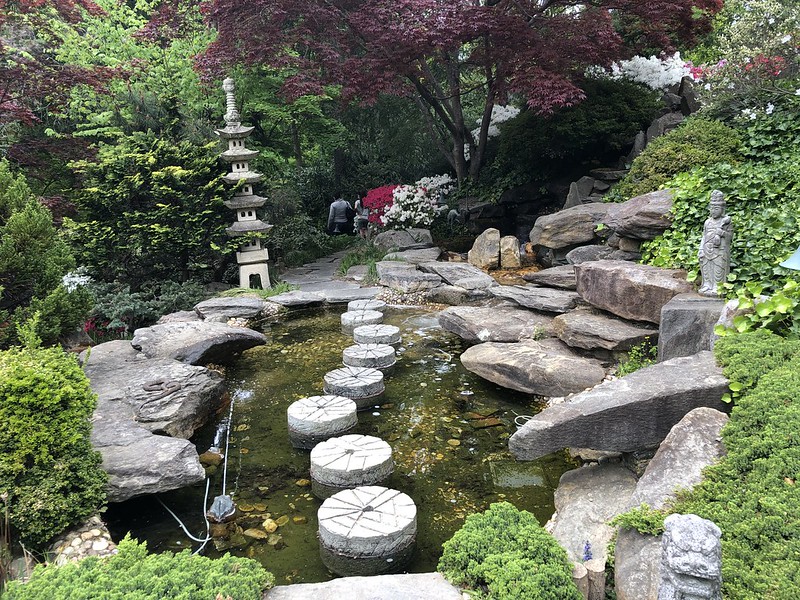Discover the beauty of Japanese garden decoration and how to create a peaceful outdoor space that resonates with tranquility and harmony.
Introduction to Japanese Garden Decoration
Japanese gardens are more than just a collection of plants and ornaments; they embody philosophy and culture, emphasizing simplicity, natural beauty, and tranquility. In my experience, creating a Japanese garden offers a peaceful retreat from the chaos of everyday life. This guide will take you through the essentials of Japanese garden decoration, helping you to create your own serene sanctuary.
Understanding the Philosophy Behind Japanese Gardens
The Core Principles
- Simplicity: Less is more. Keep designs minimalistic to promote meditation and clarity.
- Natural Balance: Use elements like water, rocks, and plants in harmony to represent nature’s beauty.
- Asymmetry: Embrace imperfection, which reflects the beauty found in nature.
Personal Reflections
When I first designed my garden, I struggled with the idea of simplicity. However, once I stripped down my initial vision, I found that focusing on just a few key elements brought about an unexpected sense of calm.
Key Elements of Japanese Garden Decoration
Plants and Florals
Certain plants are quintessential to Japanese gardens. Here are a few you might consider:
- Bamboo: Symbolizes strength and is often used to create privacy.
- Maple Trees: Their vibrant fall colors add aesthetic appeal.
- Pines: Represent longevity and endurance.
Water Features
Water plays a crucial role in Japanese gardens. It can be incorporated through:
- Ponds: Serve as focal points and are often home to koi fish.
- Bubbling Streams: Mimic the sound of flowing water, enhancing tranquility.
- Water Basins: Used for purification rituals, these are often placed at the entrance.

Rocks and Stones
Rocks serve as the foundation of the garden’s landscape. They are used for:
- Pathways: Guide visitors through the garden.
- Seats: Natural stones can be arranged for resting places.
- Symbolic Arrangements: Rocks can represent mountains or islands in water.
Garden Structures
Incorporating structures like:
- Tea Houses: Offer spaces for relaxation and meditation.
- Bridges: Enhance the garden’s aesthetic while providing access.
- Lanterns: Provide lighting and enhance evening beauty.

Design Inspirations and Styles
Different Types of Japanese Gardens
Each garden style has unique characteristics:
| Garden Type | Description |
|---|---|
| Strolling Gardens | Large gardens meant for leisurely walks, featuring winding paths and beautiful vistas. |
| Zen Gardens | Minimalist gardens that focus on meditation and tranquility, often characterized by sand or gravel patterns. |
| Tea Gardens | Designed for serving tea, featuring tea houses and pathways leading guests through nature. |
| Pond Gardens | Central water features with islands and bridges to enhance the picturesque landscape. |
Creating Your Unique Japanese Garden
When crafting your garden, consider mixing elements from different styles to create a space that resonates with you. For example, I combined aspects of a Zen garden with a traditional tea garden to achieve a tranquil area for reflection and social gatherings.

Tips for Implementing Japanese Garden Decoration
Selecting the Right Location
Choosing the ideal spot is crucial. Look for areas that receive a mix of sunlight and shade, as this will help your plants thrive. In my case, I chose a corner of my yard that was partially shaded by a large oak tree, creating a peaceful retreat.
Choosing the Right Materials
Opt for natural materials like stone, wood, and bamboo. Here’s a quick comparison of materials:
| Material | Pros | Cons |
|---|---|---|
| Stone | Durable, natural appearance | Heavy and difficult to move |
| Wood | Flexible, easy to work with | Can rot or warp if untreated |
| Bamboo | Strong, versatile, eco-friendly | Can be invasive if not contained |

Utilizing Color and Texture
Incorporating varying shades of green along with pops of color from flowering plants can create visual interest. Textures from different leaves and stones also add depth to your landscape.
Maintaining Your Japanese Garden
Routine Care and Maintenance
Maintenance is essential to keep your garden thriving. Regular pruning, cleaning water features, and replacing stones or gravel as necessary will help maintain its beauty.

Seasonal Changes
Recognizing seasonal changes can help you anticipate what to focus on:
- Spring: Plant new flowers and prune trees.
- Summer: Water and maintain plants actively.
- Autumn: Clean up fallen leaves and prepare for winter.
- Winter: Protect vulnerable plants and enjoy the serene snowy landscape.
Common Challenges in Japanese Garden Decoration
Pest Control
Pests like aphids or snails can disrupt your garden’s harmony. Consider natural remedies like introducing beneficial insects or using organic repellents to manage these challenges.

Weather Considerations
In extreme weather, ensure that your plants are well-hydrated, and consider adding mulch to retain moisture. I’ve learned the hard way that protected areas are essential during strong storms!
FAQs about Japanese Garden Decoration
1. What are the best plants to include in a Japanese garden?
Popular plants include bamboo, Japanese maple, and azaleas. Consider the local climate when selecting plants.
2. How do I create a Zen garden in my backyard?
Start with a flat area, add sand or gravel, and create patterns using a rake. Incorporate rocks and minimal plant life for a serene effect.
3. Can I incorporate modern elements into a traditional Japanese garden?
Yes! Blending modern elements such as seating or contemporary art pieces can add a unique touch while maintaining harmony.
4. How much does it cost to create a Japanese garden?
Costs vary widely depending on size, plants, and materials. Starting small can keep costs manageable while allowing for gradual growth.